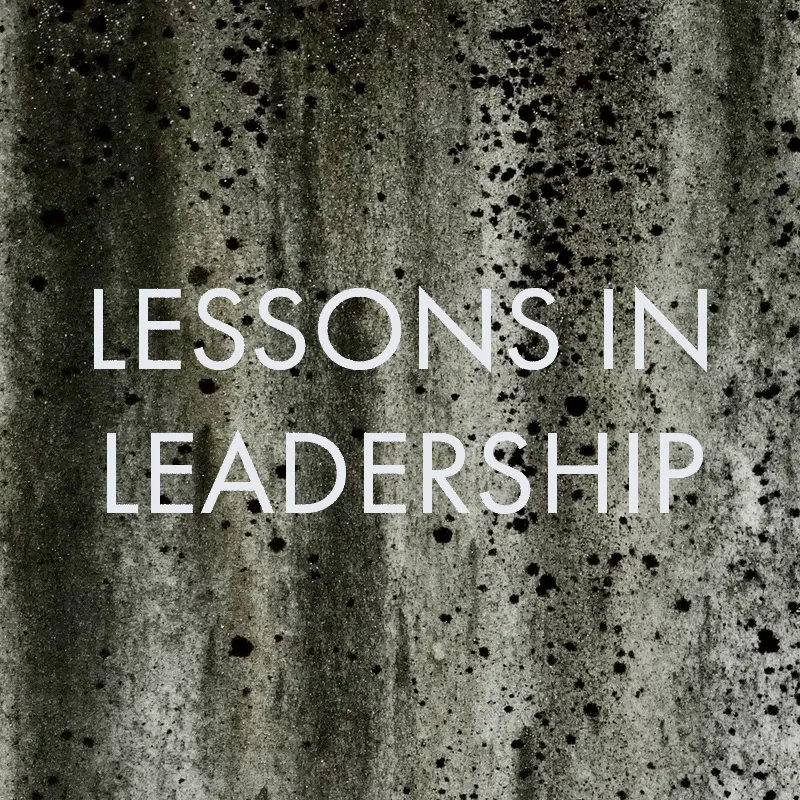
Leaders Need Followers
Paul Finch
Programme director of the World Architecture Festival
January 17, 2024
Paul Finch looks at collaboration and the designer’s broader responsibilities.
I was once asked at a public meeting to define the different roles of architects and engineers (a more connected relationship in the U.K. than it is in the U.S.). In a probably too flippant response, I invited the audience to think about the on-screen relationship between Fred Astaire and Ginger Rogers. How did two distinct personalities manage to become more than the sum of their (as it were) parts? An answer is that he gave her class, and she gave him sex appeal.
One hesitates to pursue this analogy too far in the context and respect of architects and engineers, but all one can say is that the leader in a dance routine is as dependent on their follower partner as the other way round. And if both are working in perfect harmony, you do get magic moments of the sort that, if they are lucky, architects and their fellow professionals will joyfully experience occasionally during their career.
Nevertheless, it is a fact of life that architects are seen by the public as the people who take the lead on the creation of buildings. Biographies of Frank Lloyd Wright are far more numerous than those (where they exist at all) of his many clients, and the history of architecture and city-making are geared heavily toward the individuals perceived as having been the “leading lights” of the huge teams responsible for any built project.
This tendency to regard the architect — and with a few notable exceptions they have typically been men — as automatic team leaders is only partly justified. There are many examples of projects where the architectural name attached to the final product gives no indication of how it came into being or who was the true project leader. Architectural history, like art history, often views buildings like paintings — it makes “authorship” a simple, singular and supremely important matter. Of course, paintings do not need planning permission and may require no human intervention other than that of the artist and, occasionally, a human subject.
Creating built environments, rather than artworks, requires an extraordinary degree of collaboration, quite apart from the inevitable negotiation of regulatory processes that would be anathema to any self-respecting artist. This collaboration makes leadership more and less important at the same time. On the one hand, the more people and organizations involved in a project, the more that clear, transparent leadership is required. On the other hand, the idea of the single presiding genius responsible for design and production becomes less and less convincing the more you review the multiplicity of agents responsible for our many built outcomes.
One thing is certain: Whatever the size of team or complexity of project, without a committed client, a decent site and an appropriate budget, nothing of any quality or significance is likely to emerge, whatever the architect’s quality. On the other hand, if the architect lacks sufficient skills or imagination to fulfill the potential of programme and site, then a successful outcome is inherently unlikely. All this assumes construction competence, without which no project is safe ...
Find a way of reconciling the apparently irreconcilable, the architect’s fees becoming the wages of synthesis.
So, where might we look for leadership in the generation of successful projects that satisfy client, user and some notion of public interest? Who might take the lead in ensuring a project does something for its neighbours, street, area, city, rather than to them? This is not a simple matter, because it involves the politics of planning and city development. There are many examples of city planners who have been far more influential than any design team that delivered developments under their umbrella. Monster though he may have been in some respects, who can deny the amazing contribution Robert Moses made to public amenity in the form of infrastructure, parks and landscape in New York and its environs?
That form of civic leadership, which unhappily bordered on dictatorship, alerts us to the balance required of true leaders, with the interests of a wide group in mind, but conscious also of the needs of those paying the bill. Ignore the context and the brilliance of the design may become an irrelevance, as in the case of the 1984 AT&T headquarters designed by Philip Johnson in the emerging postmodern manner, complete with its broken pediment, “Chippendale” rooftop. (I once asked Johnson what the AT&T directors said when he revealed the design for the first time. His response: “They said thank God it’s not another one of those steel and glass things.”)
Whatever the building’s merits, as the symbolic powerhouse of a mighty corporation it became irrelevant because of regulatory changes soon after the building’s completion that forced AT&T to abandon its monopoly in various markets. No longer was there a requirement for a commercial cathedral trumpeting its occupant’s universal power. Perhaps appropriately, it is now occupied by Sony, which felt the need to meddle with the iconic design, no doubt to make clear who is in charge of its architecture and, hence, image.
A really great team leader on that project, as opposed to a great designer, might have asked what changes might take place that would undermine the programme for the first use — and ensure the building would be flexible and adaptable enough to embrace new ways of doing the same thing in the building, possibly flexible enough to be capable of accommodating entirely new uses without major demolition.
This is the difference between the statesman and the politician: The latter is concerned with short-term considerations, the former with the implications of what is proposed in the round and over the long term. There is no reason why architects cannot aspire to, and successfully emulate, the characteristics of the statesman — that is to say, find a way of reconciling the apparently irreconcilable, the architect’s fees becoming the wages of synthesis.
Paul Finch is the programme director of the World Architecture Festival and a regular contributor to DesignIntelligence.




